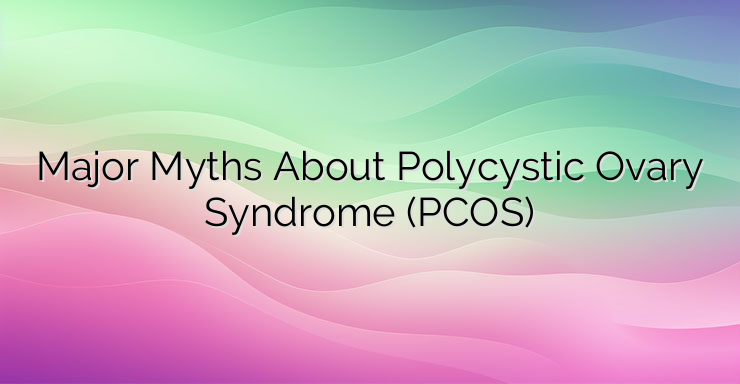Polycystic ovary syndrome (PCOS) is one of the most common hormonal problems, affecting about 15% of women of reproductive age. The syndrome is characterized by increased production of androgens, disturbances in the regularity of the menstrual cycle and chronic anovulation, ovarian cysts, metabolic disorders – insulin resistance, dyslipidemia, obesity, etc. There are many myths about polycystic ovary syndrome that scare young girls and women and misrepresent the condition. Although patients suffering from PCOS cannot be completely cured, they can receive adequate therapy, which, combined with a change in daily habits, can contribute to good control and prevention of chronic diseases such as arterial hypertension, type 2 diabetes and etc. Among the most common myths are: 1. The presence of PCOS is necessarily associated with the presence of ovarian cysts – many women think that the absence of ovarian cysts excludes the diagnosis, but this is not the case. For a condition to be diagnosed as PCOS, two of the following three characteristics must be present: polycystic ovaries, chronic anovulation, or hyperandrogenism (increased levels of male sex hormones). Ultrasound features include enlarged ovaries, the presence of an increased number of follicles (at least 12) measuring 2-10 mm, and the presence of these signs can be unilateral or bilateral. 2. The absence of high serum levels of androgens excludes the diagnosis – hyperandrogenemia can be of two types: biological and clinical. In some cases, patients with normal serum levels of androgens have manifestations of hyperandrogenism – increased hair growth (hirsutism), acne, alopecia, stretch marks, weight gain. This is the so-called clinical hyperandrogenism. 3. All patients with PCOS should undergo therapy with oral contraceptives (contraceptives) – contraceptives improve symptoms, regulate hormones and are prescribed for irregular menstrual cycles. In patients aiming to become pregnant, oral contraceptive therapy is not recommended. In the absence of ovulation in such patients, anti-estrogen therapy is recommended. Antiestrogens displace endogenous estrogens, bind to estrogen receptors, and stimulate the production of gonadotropin-releasing hormone by the hypothalamus. In this way, the production of follicle-stimulating and luteinizing hormone increases, leading to ovulation. 4. Patients with polycystic ovary syndrome cannot get pregnant – the truth is that chronic anovulation can make it difficult to get pregnant due to the lack of a viable egg, but there are medications that initiate ovulation – for example, gonadotropin-releasing hormone agonists, anti-estrogens. Fertilization can also take place without underlying therapy. 5. Irregular menstrual cycles always mean polycystic ovary syndrome – many women have had problems with their menstrual cycle at some point in their lives.very often caused by periods of high stress, sudden increase or decrease in body weight, excessive physical activity, etc. A change in the duration and abundance of the menstrual cycle does not always mean polycystic ovary syndrome. Causes of irregularity can be inflammatory diseases, uterine polyps, uterine fibroids, thyroid gland diseases, etc. Lifestyle changes, weight loss, adherence to an anti-inflammatory diet and increased physical activity are the first steps towards improving the symptoms of PCOS and preventing the complications that accompany it.


Leave a Reply